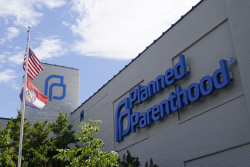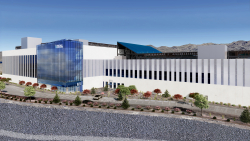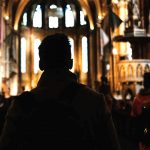On July 16, 1945, the immense destructive power of nuclear weapons became clear when the first atomic bomb was tested at the Trinity Site in New Mexico. Yet, the majority of the world would not understand the capabilities of the weapon of mass destruction, or even know of its existence, until three weeks later when the bomb was unleashed on the Japanese city of Hiroshima.
“Trinity was a paradox,” suggested Dr. Matthew Schmidt, professor of national security and political science at the University of New Haven.
“It was a quirk of history that at that moment the energy of the atom was engineered to kill,” Schmidt told The National Interest. “The longer legacy of that day will be much greater than ‘the bomb.’ Eighty years ago, the world stepped into the epoch of the galactic.”
Atomic Scientists’ Main Goal Was Nuclear Energy, Not a Weapon
It must also be remembered that Trinity was as much about harnessing energy as it was about creating a super weapon.
“From the earliest days, the scientists working on fission were thinking about energy-producing reactors. The bomb was an implied possibility, not the original goal,” said Schmidt.
Professor Justin Miller, associate professor of practice in the School of Cyber Studies at the University of Tulsa, explained to The National Interest that the Trinity test was not just a scientific milestone. It was also a moment that changed the nature of human existence.
“For the first time, humanity created a weapon capable of ending civilization,” Miller added. “The immediate environmental, health, and geopolitical consequences were substantial, but the longer-term impacts, particularly on human health, regional ecosystems, and cultural memory, remain understudied and often ignored in public discourse.”
When the explosion occurred at 5:29 AM, the world did not immediately change, but it would never be the same again.
“It put us on the brink of self-immolation,” said Schmidt. “The fission bomb was a necessary step to reach fusion power, which we finally seem near to controlling.”
Fusion has the potential to provide cheap, nearly limitless power, which could have a lasting impact on the geopolitical and social structures of our lives.
“The effect of this can’t be underestimated. In many ways, the entirety of human history has been a story of the contest for, and cooperation to increase, access to energy. Changing that changes everything,” Schmidt continued—noting that it will make power-hungry artificial intelligence (AI) feasible in the long term. At the same time, the computational power of that technology, combined with human genius and cooperation, will eventually enable humanity to steer clear of a total climate apocalypse.
“That is, the technology to kill the planet may, in the end, save it,” Schmidt added. “The power of atomic energy unleashed in New Mexico will power the human+AI era to transform our lifespans, fabricate the material to put payload into orbit cheaply and routinely on elevators into space, and explore the galaxy in a real and deep sense.”
The Atomic Bomb Saved Lives
In the nearly 80 years since the end of the Second World War, there has been the question of whether the use of the atomic bomb was justified. More than 214,000 people, many of them civilians, were killed at Hiroshima and Nagasaki.
However, it has been argued that at least half a million military personnel may have been saved by not having to invade Japan, which was preparing for a literal fight to the death. That is in addition to the greater devastation the island nation may have already endured.
“The atomic bomb unquestionably altered the trajectory of World War II and spared the US from what would have been a catastrophic land invasion of Japan, likely costing hundreds of thousands of American and Japanese lives,” said Miller.
Yet, it is unclear whether the atomic bomb ultimately made the United States “safer.”
“In the immediate aftermath, the US held a near-monopoly on nuclear power, briefly granting it a strategic advantage,” Miller acknowledged. “But this dominance was fleeting. The Soviet Union detonated its first atomic bomb in 1949, initiating the Cold War arms race and ushering in the era of mutually assured destruction (MAD).”
From that point forward, national security was not defined by superiority, but rather by the ability to deter. In that sense, the atomic bomb did not make the United States safer in the long term; it made global security more fragile and existentially precarious.
“Given the rapid scientific progress in fission research during the 1930s and 1940s, it is highly likely that another nation would have developed nuclear weapons eventually,” said Miller. “The fact that the US was the first to develop and use nuclear weapons allowed it to shape the emerging global framework, both in doctrine and diplomacy, and influenced how such weapons would be viewed, not merely as tools of warfare, but as enduring symbols of ultimate power.”
A key point is that early US leadership also helped drive the creation of arms control agreements, such as the Non-Proliferation Treaty. It also laid the foundation for scientific and military infrastructure to manage nuclear risks, including proliferation, rogue actors, and terrorism.
“While the bomb may not have made the US inherently safer in the long run, it compelled the nation to assume responsibility for leading in a new era of existential risk, one in which safety is defined not by dominance, but by restraint, readiness, and strategic foresight,” said Miller.
The Lingering Impact of the Trinity Test
One notable point is that on significant anniversaries, such as this year, the media will focus on the destruction of the Japanese cities. By contrast, the Trinity test’s impact on the surrounding area is often overlooked.
“Many of the people living near the Trinity site in New Mexico, largely rural, poor, and Hispanic or Indigenous, were never warned or compensated for the radioactive fallout,” Miller explained. “Generations later, many communities report elevated cancer rates and genetic illnesses. Yet, these downwinders are still excluded from most federal compensation programs.”
The test could also be seen as the start of a culture of secrecy and sacrifice in the name of national security, one that often dismissed the ethical costs borne by civilians and service members.
“The ripple effects of atmospheric and underground testing during the Cold War are still being felt around the globe, in everything from radioactive isotopes found in glaciers to the normalization of nuclear brinksmanship in geopolitics,” Miller, a long-term resident of New Mexico, explained.
He told The National Interest that he was extremely surprised by the depth and spread of fallout from the Trinity site.
“Maps and fallout models published in recent years show that radioactive particles from the 1945 test reached far beyond New Mexico, affecting downwind populations across dozens of states, not just the Southwest,” Miller noted. “That governmental failure from 1945 is now compounded by decades of groundwater contamination from the nearby White Sands Missile Range, which could threaten the water supply for residents of Las Cruces. In March 2025, the New Mexico Environment Department (NMED) issued a $10 million fine against federal authorities for ongoing environmental violations. Yet these broader consequences remain largely unaddressed in federal public policy.”
He added that shining more light on Trinity is not about revisiting past national guilt. It should rather be seen as helping to understand how the decisions of that era still shape policy, health, and global security today.
“It also offers a chance to examine how technological innovation, when pursued in the fog of war, can outpace our ethical and environmental readiness,” said Miller.
“Oppenheimer’s famous reference to the Bhagavad Gita quote years later is true in a much deeper way,” said Schmidt. “Atomic power could yet be a destroyer of our world in a literal sense, but it’s already destroyed our world as we’ve known it for millennia.”
About the Author: Peter Suciu
Peter Suciu has contributed over 3,200 published pieces to more than four dozen magazines and websites over a thirty-year career in journalism. He regularly writes about military hardware, firearms history, cybersecurity, politics, and international affairs. Peter is also a Contributing Writer for Forbes and Clearance Jobs. He is based in Michigan. You can follow him on Twitter: @PeterSuciu. You can email the author: [email protected].
Image: Wikimedia Commons.


















